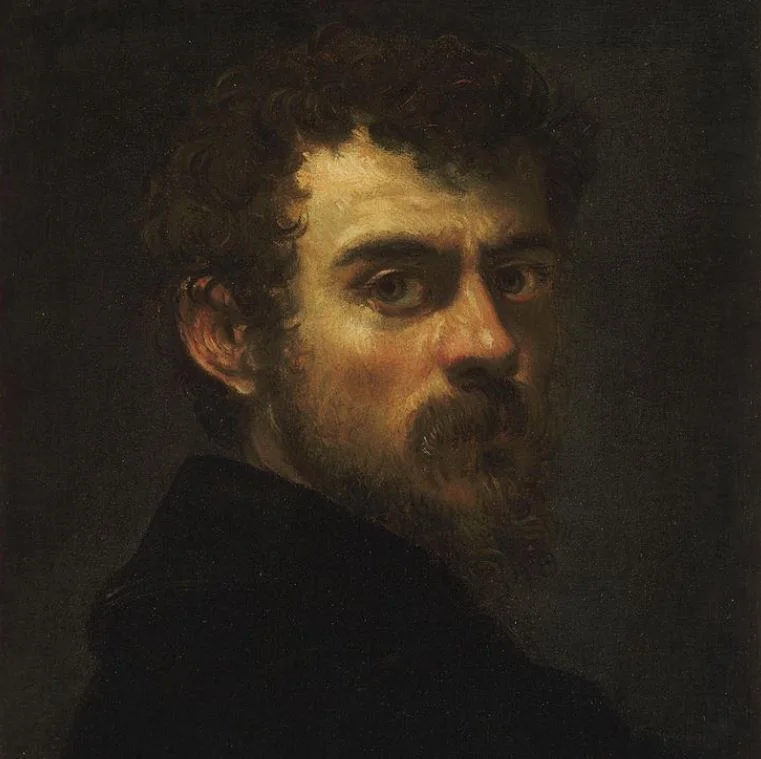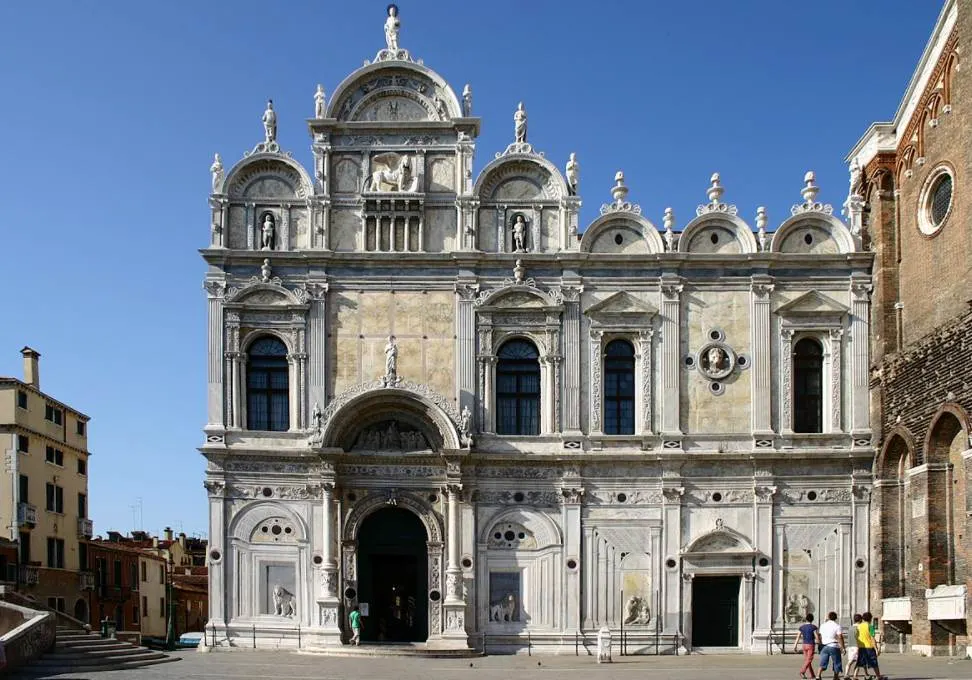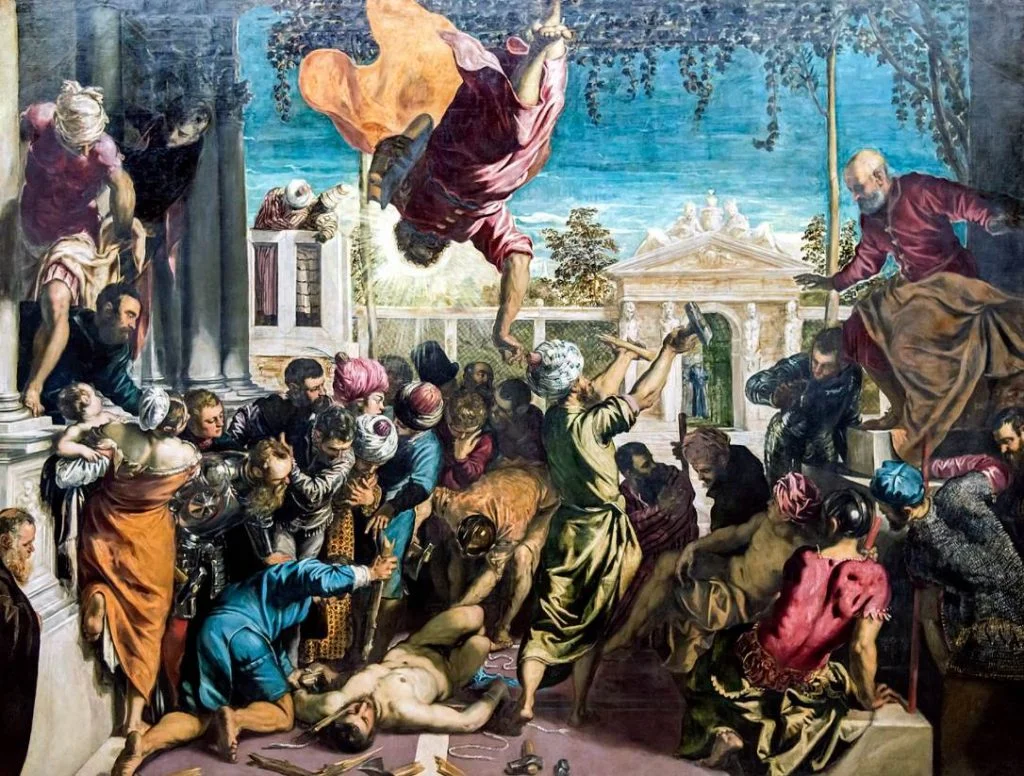The early years of Jacopo Robusti (1518-1594), better known by the nickname he received as a little boy “Tintoretto,” are somewhat of a mystery. He was born and raised in Venice, Italy and his nickname refers to his father’s profession, a dyer or “tintore,” which means he wasn’t born into a rich family.
He didn’t receive any notable forming training but his work ethic was second to none. This is one of the reasons why he was referred to as “Il Furioso” throughout his career, the other being the fact that he painted at an incredible speed.
He often painted for free during his early years or just enough to buy the painting materials. Yes, he was a real hustler who eventually managed to become one of the most respectable painters of the Venetian School in the 16th century, along with Titian and Veronese.
Let’s take a closer look at one of the defining works he created during the early phase of his career called “Miracle of the Slave,” one of the paintings that established Tintoretto as one of the leading painters in Venice.
1. It was completed in the late 1540s
Miracle of the Slave was one of Tintoretto’s first major commissions in Venice. Even though he already earned some commissions here and in there in the early 1540s, he still had to work hard to earn the respect of the patrons in his hometown.
He completed this work in 1548 which means he was 30 years old at the time. This means that he doubled down on his efforts with this work to try and establish his reputation in the city.

2. It was commissioned by a Venetian confraternity
The painting was commissioned by a local confraternity, a religious organization that was a collection of 6 different groups at the time. They were housed in the Scuola Grande di San Marco, a historic building that was constructed for 2 decades in the late 15th and early 16th centuries.
This building is located in the northern part of the city, just north of San Marco Square and the Doge’s Palace. Today, the purpose of the building has changed as it serves as a museum displaying historical medical equipment.
This building faces the Campo San Giovanni e Paolo which is home to the basilica with the same name, and the painting decorated this building upon completion.

3. It depicts a miracle conducted by the patron saint of Venice

The most famous square in Venice is Saint Mark’s Square and one of the most prominent landmarks in the city is Saint Mark’s Basilica. This kind of hints at the fact that Saint Mark is the patron saint of Venice.
That’s why the Miracle of the Slave is also sometimes referred to as “The Miracle of St. Mark” as it depicts the city’s patron saint who performs a miracle.
The painting shows a scene in a story of a popular medieval work called the “Golden Legend.” A slave was worshipping the relics of a saint and is about to be tortured for this during the Christian persecutions.
Saint Mark suddenly appears and crushes the bone-breaking devices that are about the permanently disfigure and blind the helpless slave.

4. It’s far from being Tintoretto’s largest painting but still huge
Tintoretto was known for his bold brushwork and the incredible speed at which he was able to complete his works. This often resulted in paintings of monumental scale that were completed in a matter of months, sometimes just even weeks.
His largest work, created shortly before he passed away, is called “Il Paradiso” and is still located in the Doge’s Palace, mainly because it’s too big to be moved. It’s considered to be the largest oil on canvas painting ever created and has dimensions of 9.1 x 22.6 meters (29.9 x 74.1 feet).
Even though Miracle of the Slave is a little humbler, it’s still pretty big as it has dimensions of 416 × 544 centimeters (164 × 214 inches).

5. It was painted in the typical late-Renaissance style
The first thing that strikes you while looking at this masterpiece is the bright and brilliant colors used by the artist. This wasn’t just a feature often used by Mannerist artists, a period known as the “Late-Renaissance,” but particularly by the artists of the Venetian School.
Especially the works of Paolo Veronese such as “The Wedding at Cana” can be described as that of a supreme colorist. Tintoretto’s paintings could hold a candle to those of Veronese in that sense.
The dramatic scene and bold gestures seen in this work are typical elements that defined the Mannerist style of the 16th century.

6. The painting was praised but the artist received a warning as well
Tintoretto put a lot of effort into this painting, especially in regard to the overall composition. Because of the speed at which Il Furioso worked, he often overlooked this part of the work.
It’s fair to conclude that this work was generally received well, especially the depiction of the slave. He was warned though by one of his friends who was a prominent art critic at the time named Pietro Aretino (1492-1556), a man who bluntly told him not to work so fast.
He didn’t listen and continued to work at an incredible pace.

7. This painting allowed him to earn numerous commissions in Venice
Just about every artist in history has a particular painting that established himself as a master. In the case of Tintoretto, the Miracle of the Slave qualifies as the defining painting of the artist’s career.
This commission was followed by a large number of commissions, most prominently commissions intended to decorate the sidewalls of chapels all around Venice.
He completed a work called “Saint Roch Cures the Plaque Victims” just a year later in 1549 for the church of San Rocco, one of the multiple commissions he received.
Remarkably, he also painted two more works to decorate the walls of the Scuola Grande di San Marco. Both were painted between 1562 and 1566 and are called “Saint Mark’s Body Brought to Venice” and “Finding of the body of St Mark.”

8. It’s located in one of Venice’s most famous art museums
So where can you admire the Miracle of the Slave today?
Unlike many of Tintoretto’s works that haven’t moved since they were completed, this one was moved to be of the most renowned art museums in Venice called the “Gallerie dell’Accademia.”
This museum was established in 1750 and is the home of some of the most famous Venetian paintings in history. Some of the highlights are “The Feast in the House of Levi” by Veronese and Titian’s version of the Pietà.

